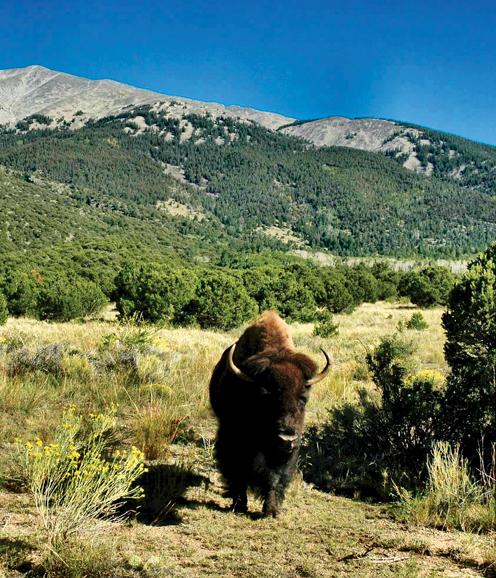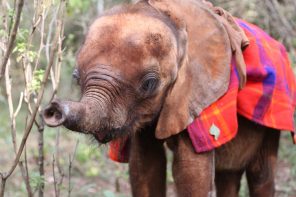On May 9, President Obama signed the National Bison Legacy Act, officially making the bison the new national mammal. Even more remarkable is that this legendary animal inspired both Democrats and Republicans in rare bipartisan action to give wholehearted support to the president’s legislation.
The American bison, long revered by Native Americans, has made a dramatic comeback from near extinction and, like the bald eagle, has become a wildlife symbol of the United States. Bison, immortalized on the “buffalo nickel” in 1913, were commonly recognized as buffalo by North American Indians and Westerners like me. (Technically, American buffalo are bison, the two main species of buffalo being found in Africa and Asia. The similar but distinct bison is native only to North America. Still, the word “buffalo” has stuck with Americans.)
Whatever you call them, massive herds once roamed the continent’s Great Plains, but in the 1800s they were tragically hunted for their hides and for sport by Western settlers. An estimated 25 to 60 million were slaughtered. By the start of the 20th century, only 541 remained in North America. For me, the legislation to honor the buffalo was profoundly significant for I once had a life-changing personal encounter with one, an amazing bison named Amelia.
While vacationing with my family in our ski lodge on the slopes of Kit Carson Mountain in Colorado’s San Luis Valley, I chanced upon a friend, Hisa Ota, a Japanese-American architect on a mission. He had recently left his lucrative position with the Walt Disney Co. to help save the buffalo. Hisa acquired the valley’s Zapata Ranch with a large herd of buffalo. He sported all the trappings of a Western rancher — wide-brimmed black hat, worn jeans and fancy cowboy boots but he rode the range on a motorcycle. He had just rescued an abandoned newborn buffalo and asked my help. We nursed the hungry calf with human baby formula in cow’s milk. She sucked the rubber nipple in great gulps and responded warmly to our caresses. We fell madly in love with her. Hisa named her Amelia.
Soon she was grazing on her own, growing fast and following us around like a dog. We found she was very intelligent and had a capacity for memory similar to elephants’. Whenever I visited the ranch, she ran to meet me and nuzzled my jacket. I felt honored and thrilled. Eight years later, Amelia weighed a ton, and while she had joined the herd of wild buffalo, she never forgot her human parents. Every time I returned, sometimes after a year from my home in Scarsdale, she recognized my call and ran out of the herd to greet me.
The life expectancy of a wild buffalo is about 15 years. Amelia is now 26. Although she is free to roam with the herd, she often hangs out in Hisa’s backyard where, he says, she sometimes watches television through the ranch house window.
Sounds almost human and yet otherworldly, no? But to look into the eyes of a wild buffalo is a mystical experience. Her hypnotic eyes, like mysterious black holes, seemed filled with deep secrets. No wonder the Indians revere buffalo. For some inexplicable reason, Amelia was and is still the most spiritual entity I have ever encountered.
A BRIEF HISTORY OF BUFFALO CONSERVATION
We can be proud that New York helped save the bison. In 1907, the Bronx Zoo bred buffalo and sent a group to Oklahoma to help restore the population. Today the Bronx Zoo has 24, and the Queens Zoo has six. About 500,000 roam public parks and private ranches. A dedicated conservation effort nurtured this revival and buffalo now range in parts of the Dakotas, Nebraska, Wyoming and Colorado. In Montana, thousands roam on Ted Turner’s Flying D Ranch.
Buffalo are migratory and play an important role in the environment. Unlike cattle, who disturb the earth by overgrazing in one area, buffalo are ecological engineers similar to yaks in Tibet and elephants in Africa. Their nomadic grazing helps create habitats for other animals and assists in cross-pollination. In Yellowstone National Park, the buffalo have renewed the migration that characterized their pattern of existence for thousands of years. The first thoroughfares of North America were the traces made by buffalo in seasonal migration. These routes, like the Vincennes or Buffalo Trace founded by explorer John Filson in 1731, had been hammered out by countless hoofs instinctively tracking along upland ridges and low valleys. The trails, followed by Indians to hunting grounds and warrior paths, later became invaluable to explorers, pioneers and armies.
For millennia, American Indians were reliant on the buffalo for survival. This interdependence is epitomized by the writer, and Lakota holy man, John Fire Lame Deer: “The buffalo gave us everything we needed. Without it we were nothing. Our tipis were made of his skin. His hide was our bed, our blanket, our winter coat. It was our drum, throbbing through the night, alive, holy. Out of his skin we made our water bags. His flesh strengthened us, became flesh of our flesh. Not the smallest part of it was wasted. His horns were our spoon, the bones our knives. His ribs were fashioned into sleds for our children, his hoofs became rattles.”




